Since Yang’s hunger strike, the frame or system of meaning, of the protest has changed. The news about Yang spread quickly throughout the mainland of Korea, in particular, in culture and art circles through internet networks. The internet café created by Gangjeong village has become a vital center, with support of non-residents, in delivering news of Gangjeong and in collecting kinds of resources.
[13] The blog for international supporters has attracted networkers and international peace organizations.
[14] Even twitter, installed on May 1, 2011, has come to play a vital role in connecting residents and sympathizers. Through all these social networks, understanding of the situation has spread, and many anti-base and environmental activists have visited the village to help. Growing numbers of national and international organizations issued public statements of solidarity and calls to preserve peace in Northeast Asia (
Sisa Jeju, June 3;
Oh My News, June 8; Jeju Sori, July 5). On June 8, two months after Yang’s arrest, ‘National Network of Korean Civil Society for Opposing the Naval Base on Jeju Island’ was formed by 140 organizations and 440 individuals (
NAPRI, June 8). This network seeks to coordinate opposition to the construction on a nationwide scale and to put pressure for the national assembly to investigate the procedure of the construction. Even overseas organizations and 101 international peace organizations issued public statements objecting to the construction as a threat to peace in the Asia-Pacific region. These new actors, have boosted the opposition movement among residents, making it possible to raise funds and mobilize other resources nationally and internationally.
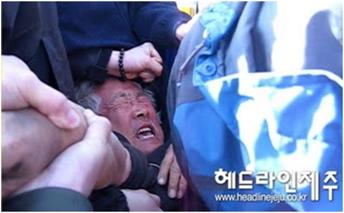
- Yang’s arrest on April 6, 2011.
On June 1, Yang Yoon-mo was sentenced to one and a half years in prison, with a stay of execution of two years. On July 2, during his physical recovery following the fast, the Gangjeong resistance and supporters organized a large-scale protest ‘to revoke the plan for the construction of the naval base on Jeju Island.’ Some 1,000 protestors from various sectors of society gathered in front of the city hall of Jeju city. Among them were well-known members of the national assembly, religious leaders, NGO representatives, members of twitter of Gangjeong, documentary directors, neighboring villagers, and 150 residents of Gangjeong. The owner of the twitter for Gangjeong, who had herself been arrested, told me “See! This is the outcome of Yang’s strike. His approach to life led to this gathering of supporters.”
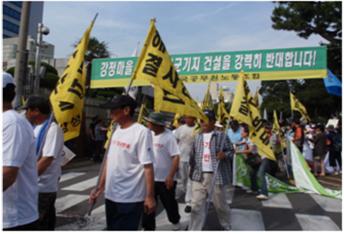
- Peace March with outside supporters, July 2, 2011.
The common values of the challengers, including residents, are preservation of the quality of life and nature, promotion of democracy, and preservation of peace through peaceful acts. The issue of potential armed conflicts has again come to the fore, and it has been widely discussed in the national internet press (Oh My News, June 29; Pressian, June 29). When civil organizations held a concert to support Gangjeong residents on May 28, the village chief declared that “this is just the beginning of peace”. This announcement illustrates the symbolic transition of the frame for the movement. The village chief again declared the victory of peace in a protest on July 2.
Throughout, the navy has continued construction despite strong protests. The navy and the construction companies moved the huge dredge boat from Hwasoon to Gangjeong on June 20 and continued related construction.
When five opposition political parties of the Jeju district requested that construction be halted to resolve the clash, the navy responded that this would cost about 100 million won per day and would make it impossible to complete construction by the target date of 2014 (Jeju Sori, April 27, 2011). The Ministry of National Defense also rejected the request to stop construction by the Jeju government (Jeju Sori, May 18, 2011).
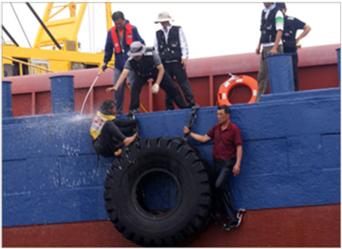
- Protesting sea dredging, June 20, 2011. Source: The internet café of the Gangjeong village
The Navy, Samsung, and the Police vs Protestors: Crack Down vs Resistance
Meanwhile, the navy announced that it was proceeding with construction in a land area of 489,000 square meters with an investment of 9.8 trillion won. It stated that 14% of the work has already been completed at a cost of 1.4 trillion won (
Kyunghyang.com, July 25, 2011).
At the time, some 40 protestors have been charged with obstruction and fined 50 million won (The Hankyoreh, July 26, 2011). In addition to applying for an injunction of off-limits against 77 protestors, the navy and Samsung C & T claimed 290 million won in compensation for damages by 14 protestors. A court decision on an application for an injunction is expected around the end of August.
Following an arrest of the leading three protestors on July 16 and a visit by the national police chief on July 21, about 300 policemen have been stationed at the entrance to Jungdeok, the intended naval base site and home of protesting villagers (
Jeju Sori, July 25, 2011).
[15] The chief called for rigorous enforcement in the event that construction is obstructed (
Jeju Sori, July 21, 2011). Within a week, the national maritime police chief echoed the same order during his visit to Segwipo (the city that encompasses the southern half of Jeju including Gangjeong) (
Headline Jeju, July 27, 2011).
The villagers and support organizations criticized government abuse and announced an all-out fight to protect the village and the peace (
Jeju Sori, July 25, 2011). Since then, chained protestors, including Hyun Ae-ja, an ex-member of national assembly of Segwipo, have guarded the entrance to Jungdeok, and other protestors have stayed in the protestors’ tent through the night.
On August 8, some 200 policemen blocked residents who tried to repair equipment in Jungdeok such as tents destroyed by typhoon Muifa (
Headline Jeju, August 8, 2011). The next day they returned with the navy to prevent residents from bringing vinyl and other materials to the site. They arrested one activist for obstructing a police officer and assault (
Headline Jeju, August 9, 2011).
[16] The village chief criticized the navy for isolating activists in Jungdeok from villagers, and called for continued resistance against the crackdown.
On August 14, tension has heightened in the village when the protestors learned that 500-600 policemen, 16 police buses, 10 vehicles with suppression gear including 3 water cannons were dispatched from the mainland. The protesters responded by confirming their determination to protect their village (
Headline Jeju, August 14, 2011). Being attacked by Jeju Islanders, the Jeju Council, oppositional political parties, national and international civil and religious organizations, and others, those police officers returned to Seoul on August 19, but around 160 police officers were again dispatched from the mainland in the same day. Moreover, on August 18, the Ministry of Defense has suggested an enforcement of the law when the court reaches a decision on its application for an injunction (
Sisa Jeju, August 19, 2011).
While the navy and the police used force to stop the protests, the navy and/or Samsung C & T enforced another law over the last three months, accusing the protestors of impeding performance of duty. This provision was even more stressful for villagers precisely because it was so vague. One resident noted that a photographer taking pictures of the scene and a car owner who parked near the construction site were accused of obstruction of business. Another resident added that the law always sided with the navy and/or Samsung. They described this situation as re-enactment of the 4.3 massacre of 1948: “all kinds of complaints and accusations and fines are killing us this time instead of guns at that time.”
Conservative vs Liberal Media: ‘Pro-North Korea Forces’ vs Peace Forces
While physical clashes occurred around Gangjeong, ideological clashes erupted in the national media. Conservative media re-emphasized the necessity to build the naval base and attacked activists as ‘pro-North Korea leftists’ (
Chosun.com, July 20, 2011).
[17] A leader of the Grand National Party, the ruling party, used the same words in the national assembly, demanding strict enforcement by the authorities (
Sisa Jeju, July 27, 2011). Pro-construction organizations in an August 5 rally likewise attacked the pro-North Korea force. The label ‘leftist’ or ‘communist’ had often been used to suppress opposition views during earlier authoritarian regimes.
By contrast, liberal media criticized the integration of US and ROK defense systems while giving voice to the protestors (
Pressian, July 29, 2011;
Hankyoreh 21, August 5, 2011). Moreover, these media interviewed outside supporters (
The Hankyoreh, July 29). They found that these supporters were ordinary citizens, artists, researchers or members of civil organizations who were concerned with peace. Four recent articles in
The New York Times conveyed the views of anti-base forces, disseminating the issue worldwide.
[18] Even CNN and ALJAZEERA broadcasted the protests of the naval base on Jeju Island on August 12, and on August 14 respectively.
Opposition Parties vs the Government: Reconsidering Construction vs Keeping Construction
On July 29, the mayor of Segwipo city accepted a government order to block the only path to enter Jungdeok. Seoul pressured the Jeju government with warnings of administrative and financial penalties for almost a year (
The Hankyoreh, July 29, 2011). The Jeju governor, however, has remained quiet about the base project, except for re-addressing a win-win project (
Headline Jeju, August 18, 2011).
With a general election and a presidential election coming in April and December next year respectively, the political parties have begun to raise the issue of the base. On August 4, the five opposition political parties called for a temporary halt in construction pending a full review by the national assembly. Immediately after their call, however, the Ministry of National Defense announced that it would push ahead with construction for national security and budget reasons. The Ministry denied again that the base was an outpost of the US military defense system (
Jeju Sori, August 4, 2011).
The Democratic Party, the main opposition party, reached an agreement with the Grand National Party to convene a subcommittee to examine the construction budget, but it failed to obtain a temporary halt in construction. Finally, on August 11, a few members of the ruling Grand National Party visited to assess the situation in Gangjeong. The base will be an issue in the coming elections.
The Pro-construction Organizations vs the Protestors: Pushing ahead with Construction vs Terminating Construction project
Pro-construction villagers and their support organizations have issued public statements or held demonstrations in the course of the conflict. However, for the first time, on August 5, they held a large demonstration near the construction site. Some 400 supporters of construction demanded moving ahead with construction in the interest of national security and safeguarding peace.
Supporters were from the Korea Veteran Association, the Navy Veteran Association and other conservative associations (
Sisa Jeju, August 5, 2011). Their banners criticized the outside supporters as “pro-North Korea garbage”. After the rally, they tried to march to Jungdeok, but 500 police blocked them to prevent clashes.
While pro-construction villagers gained outside support,
[19] anti-construction villagers also won additional support. Father Moon Jeong-hyun, a leading exponent of the anti base movement in Pyeongtaek, moved to Gangjeong in July.
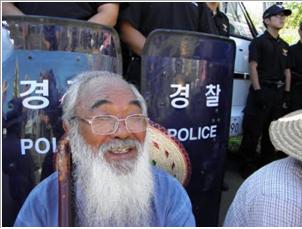
- Father Moon sitting surrounded by youth conscripted as riot police in front of naval base construction headquarters
Catholic priests in Jeju parish have stayed in the tents of Jungdeok to block a sudden police action since July 25. Jeju parish also held mass in Jungdeok with about 1,000 believers on August 11 (Jeju Sori, August 11, 2011). Moreover, Gwangju parish, Korean YMCA, the Korean Teachers & Education Workers’ Union, WILPF (Women’s International League for Peace and Freedom), Christian Conference of Asia, and others expressed solidarity with the villagers. The Global Campaign to Save Jeju Island was formed with a Website. [20] A growing number of public intellectuals worldwide, including Noam Chomsky, Richard Levins, George Katsiaficas, and Gloria Steinem have expressed support for the villagers.

- Mass at Jungdeok on August 11, 2011.
On August 6, anti-construction villagers and supporters held a 2nd rally calling for an end to the plan to construct the base. About 800 participants came from throughout the nation. Most were ordinary citizens including a circle of culture and arts, members of civil organizations, and villagers. This time, leaders of opposition parties played a prominent role during the two-hour rally. [21] In positioning for the elections, each side emphasizes the search for peace, but the logic of the two is diametrically opposite.
With the development of the movement, a change has occurred in the collective identity and rituals of the protestors. A young villager told me that he had gained understanding of the older generation since struggling together. After learning about the history of the community, he came to identify strongly as a member of it. He and other villagers express strong determination to preserve their community for future generations.

- Peace, Joy and Life Celebration
Meanwhile, outside supporters have come from all over the mainland and even outside the country. Some came to Jungdeok to support Gangjeong villagers from the start, but others reported that they became engaged after discovering the beauty of the seaside, the suffering of villagers, or the possibility of communal living. The result is that the collective identity of the protestors is changing from the solidarity of rage in 2007 to communal solidarity.
Along with new types of support, the rituals of the anti-construction groups become more diversified. As seen in the 2nd rally on August 6, songs, dances and plays constituted a large part of the demonstration.
The candlelight vigils every evening in front of the construction site show a similar pattern. The Gangjeong café, the center for communication, posted comic films and an ad for inviting mainlanders to spend their summer holiday camping in Jungdeok. Visitors and supporters spent their time walking, talking, or erecting towers with small stones. While some are still chained, demonstrators are creating softer, life-affirming means to vitalize the movement.

- Tents to protect Jungdeok.
I have attempted to explain the background to the Gangjeong struggle by analyzing frames, discourses or narratives developed by major actors opposing base construction. The navy responded by emphasizing economic advantages to persuade the residents of Jeju Island, especially those of the relevant villages, to accept the base. The navy’s weakness lies in its failure to gain the consent of the residents and in the fact that base construction is at odds with powerful images of Jeju Island.
The former Jeju government presented issues of the image of the Island of peace, invigoration of the local economy, and the consent of residents at first, but it put these factors aside and moved to site selection on the Island, circumventing the democratic process and stoking popular opposition. Later it highlighted the economic benefits to local residents. These policy shifts had the effect of isolating Gangjeong from outside supporters of the village. Moreover, the shifts had the effect of moving the residents of Jeju farther from the original issue of peace. The current government called for a win-win solution, but its proposal for conflict resolution had the effect of intensifying opposition.
Gangjeong opposition groups faced the difficult problem of justifying their protests against all of the supporters of the plan under complex circumstances. Meanwhile, they have continued to promote their discourse of peace and to counter the claims of proponents of local development predicated on a provocative military base in a protected area. They have raised important issues of democratic procedure, community solidarity and environmental protection. With a strong collective identity, they created or revived numerous rituals of protest over four years. Recognizing in 2011 that they had to place their own bodies on the line, they reemphasized the discourse of life and peace with growing support from outside the village, Jeju Island and Korea. Yang Yoon-mo’s hunger strike was pivotal in mobilizing outside support throughout Korea and internationally. Moreover, it re-ignited the issue of the peace in the Asia-Pacific region, recruiting participants with the help of social networking and/or of national and international media. From Jeju Islanders to worldwide intellectuals, and from Korean oppositional political parties to civil and religious organizations abroad, outside supporters have been growing. Widely adopted master frames, as Snow and Benford conclude, have made it possible to align the experiences of sympathizers and incorporate prevalent beliefs and symbols on a scale that extends from the local community to the global.
[22]
However, the military authorities have recently responded with a strict enforcement of the law, with support of conservative media and the pro-base organizations. After additional police officers and suppression equipment vehicles have arrived at Jeju, the sense of urgency has grown. At this writing, tension has mounted around the village while participation and support have increased for both sides, leading to a slight change of collective identity and rituals among the protestors.
III. Notes
[1] The author edits the main text of the article and the updates: “National and International Protests Challenge Naval Base Construction on Jeju Island, South Korea”, The Asia-Pacific Journal, Vol 9, Issue 33 No 2, August 15, 2011.
[2] Gwisook Gwon is a lecturer in the Department of Sociology, Jeju National University on Jeju Island. Her book, The Politics of Memory, a study of the Jeju 4.3 uprising, was designated an excellent book of the year 2007 by The National Academy of Sciences of the Republic of Korea.
[3] I am very grateful to Sung-youn Cho, Douglas Hansen, Heonik Kwon, and Mark Selden for constructive comments.
IV. References
[1] Cha, Kyoungeun, “Jeju and a Naval Arms Race in Asia”, Institute of Policy Studies, June 18, 2010; Uooksik Jung, “Oh! Peace”, Pressian, May 17, 2011.
[2] See Cha, Kyoungeun, ibid.
[3] Bruce Gagnon, co-coordinator and co-founder of ‘the Global Network against Weapons and Nuclear power in Space’, is a leading peace activist. See space4peace.blogspot.com.
[4] ‘Vimeo’ and ‘Youtube’ posted a film interview with Yang Yoon-mo. This film was made by Jane Jin Kaisen and Guston Sondin-Kung. Jane is an independent Danish filmmaker. Kim Min-Su (a young Gangjeong villager) filmed the footage of Yang’s arrest. The film was posted on Vimeo (
http://vimeo.com/24007992) on May 21, and on Youtube (
http://www.youtube.com/watch?v=TD8zkOHN83W) on May 24, 2011. Yang was released on June 1. He is again hospitalized for treatment at this writing.
[5] Johnston, Hank, 1995, “A Methodology for Frame Analysis”, in Hank Johnston and Bert Klandermans (eds.), Social Movements and Culture, Minneapolis: University of Minnesota Press, p. 218.
[6] Taylor, Verta and Nancy Whittier, 1995, “Analytical Approaches to Social Movement Culture”, in Hank Johnston and Bert Klandermans (eds), ibid.
[7] Jeju residents have pursued peace and human rights as their vision for the Island since suffering from ‘the Jeju 4.3 massacre’. About 30,000, over 10% of the population, died or missing during 1948-1953, and the trauma has remained until today. See Jeju Weekly, March-May, 2011.
[8] The survey was designed to poll opinions of residents living in each administrative district with which the particular village was affiliated. As a result, opinions of the affected villages were largely ignored.
[9] The population of Gangjeong village was about 1,900, and eligible voters were about 1,400 according to resident registration as of 2007. However, the expected total number of votes was about 1, 050 since about 350 voters were not in the area at the time (Oh My News, November 13, 2007). See Ahn, Christine 2011 for details about the selection of the site. Christine Ahn, “Naval Base Tears Apart Korean Village”, Foreign Policy in Focus, August 19, 2011.
[10] Previous research also noted this transition of discourse. See Cho Sung-youn, 2008, “From an Island of Suffering to an Island of Peace”, Yoksabipyoung, no. 82.
[11] The ritual of shaving the head is a popular act showing strong determination of protesters and a means to strengthen solidarity in Korean society.
[12] This case is appealed to the Supreme Court. A decision to appeal is expected within the year.
[13] See the internet café of the Gangjeong village.
http://cafe.daum.net/peacekj
[14] This blog is owned by Choi Sung-hee, a peace activist. She was imprisoned for holding a banner that said “Do not touch one stone. Do not touch one flower.” She participated in a hunger strike several times after her arrest on May 20, 2011. She was sentenced to 8 months in jail with a stay of execution for two years on August 17.
[15] On July 16, about 20 undercover police officers arrested three leading activists in the anti-base movement in the village: village chief Kang Dong-kyun, Brother Song Kang-ho, and base opposition leader Ko Kwon-il. Kang Dong-kyun was released in the next day, but Song Kang-ho was released in the end of July. Lastly Ko Kwan-il was released on bail on August 9.
[16] The police reported that he was booked but not detained on August 10 (Headline Jeju, August 10).
[17] According to Yeo, referring to the supporters as an “outside force” was a government strategy to separate them from villagers in the anti-base movement in Pyeongtaek. See Andrew Yeo, “Back to the Future: Korean Anti-base Resistance from Jeju Island to Pyeongtaek”, The Asia-Pacific Journal, Vol 9, Issue 32 No 3, August 8, 2011.
[18] Three writers, Christine Ahn, an executive director of Korean Policy Institute (August 5, 2011), Gloria Steinem (August 6, 2011), and Xiao Ling from Singapore (August 10, 2011), urged a halt to the militarization of Jeju Island for peace and life in Jeju and throughout the Asia-Pacific region. On August 18, 2011, Choe Sang-hun introduced the complex issues of the naval base, including breakdown of the community, environment, and American missile defense program.
[19] According to residents, only seven pro-base villagers showed up for the rally and some participants were mobilized by the government.
[20] The Save Jeju Island website administered by Matt Hoey, an aerospace nuclear weapons analyst, posts regular news updates.
http://www.savejejuisland.org/Save_Jeju_Island/Welcome.html
[21] Among political leaders, Back Ki-wan, a prominent activist from the 60’s, Jung Dong-young, a presidential candidate of the Democratic Party in 2007, and Kwon Young-gil, a presidential candidate of the Democratic Labor Party both in 2002 and in 2007, and members of national assembly showed up. Jung Dong-young mentioned the potential military conflicts between China and the USA, and promised to construct a peace park in Gangjeong, not the naval base.
[22] Snow, David and Robert Benford, 1992, “Master Frames and Cycles of Protest”, in Aldon Morris and Carol McClurg Mueller (eds.), Frontiers in social Movement Theory, New Haven: Yale University Press.
IV. Nautilus invites your responses
The Northeast Asia Peace and Security Network invites your responses to this essay. Please send responses to: bscott@nautilus.org. Responses will be considered for redistribution to the network only if they include the author’s name, affiliation, and explicit consent.
 The NAPSNet Policy Forum provides expert analysis of contemporary peace and security issues in Northeast Asia. As always, we invite your responses to this report and hope you will take the opportunity to participate in discussion of the analysis.
The NAPSNet Policy Forum provides expert analysis of contemporary peace and security issues in Northeast Asia. As always, we invite your responses to this report and hope you will take the opportunity to participate in discussion of the analysis.
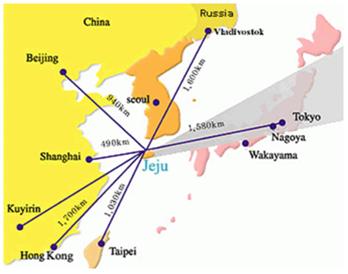
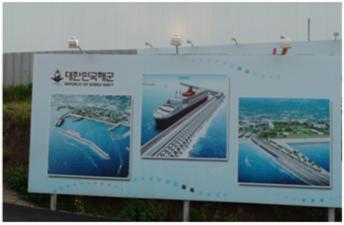
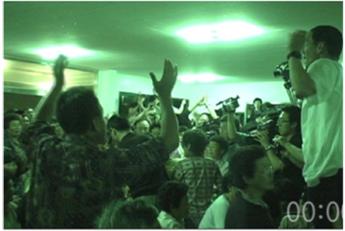
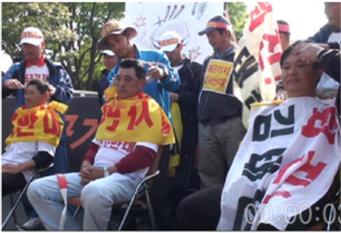
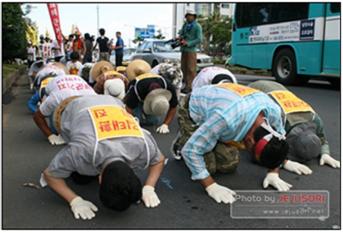







![]() The NAPSNet Policy Forum provides expert analysis of contemporary peace and security issues in Northeast Asia. As always, we invite your responses to this report and hope you will take the opportunity to participate in discussion of the analysis.
The NAPSNet Policy Forum provides expert analysis of contemporary peace and security issues in Northeast Asia. As always, we invite your responses to this report and hope you will take the opportunity to participate in discussion of the analysis.
